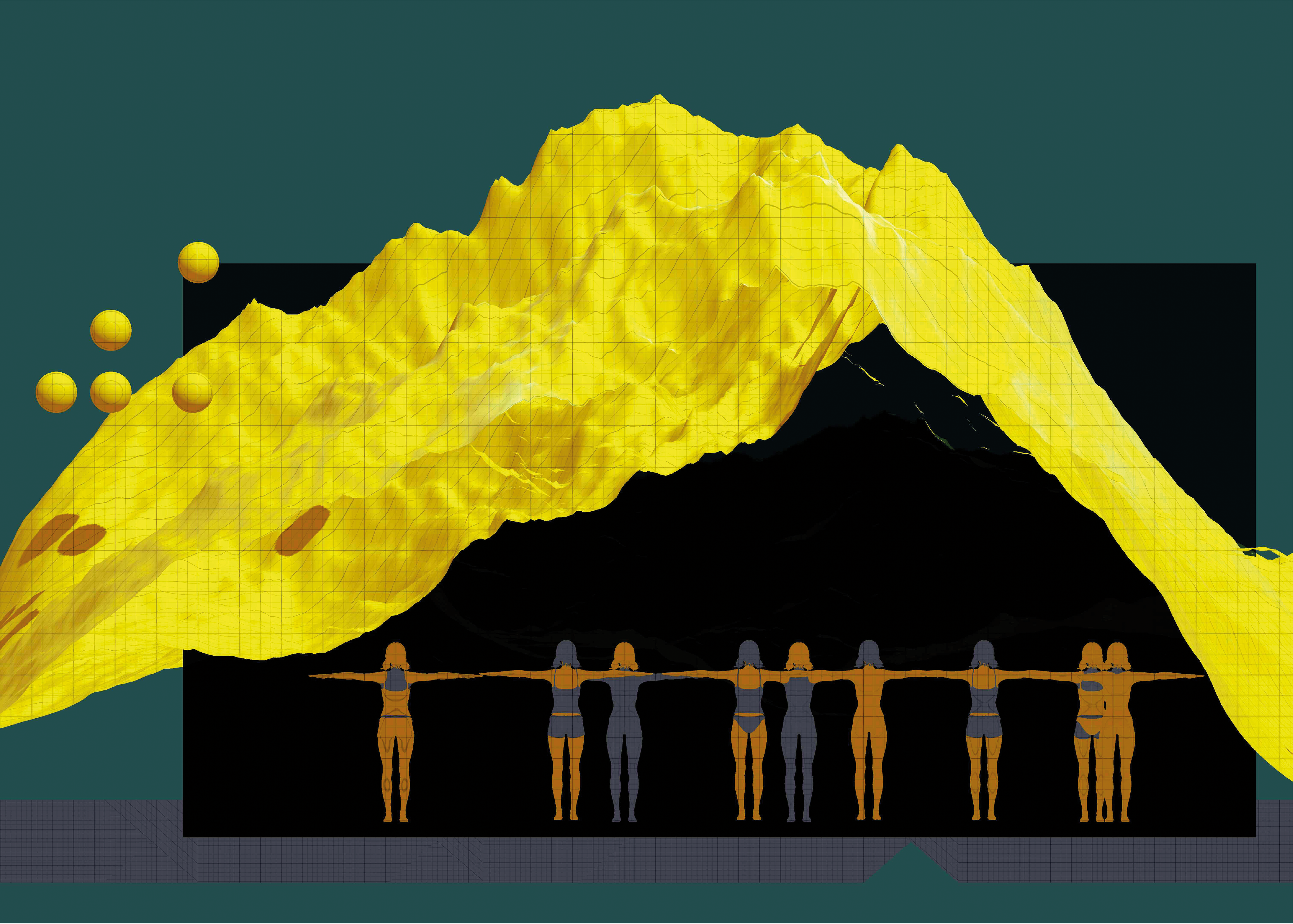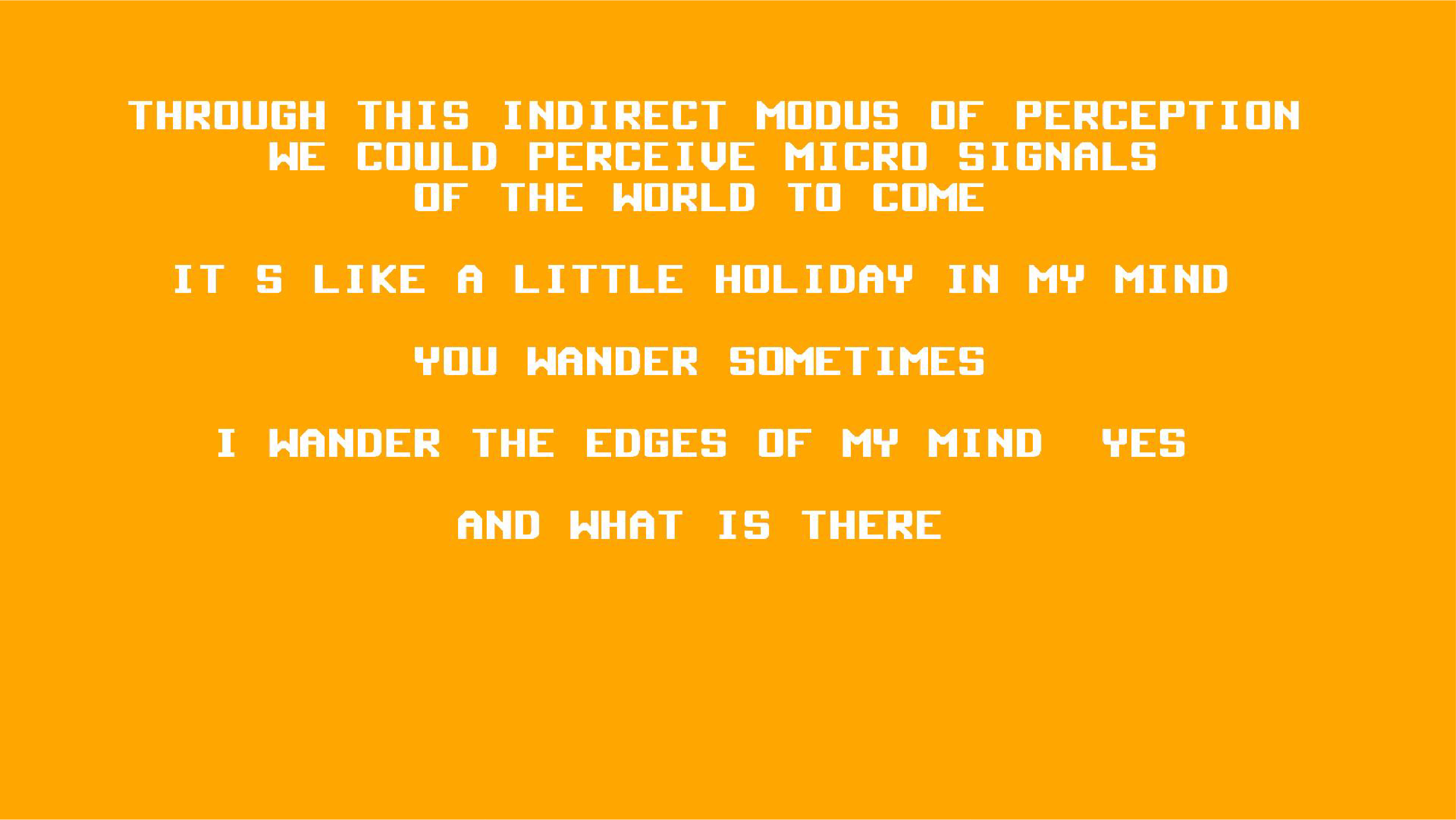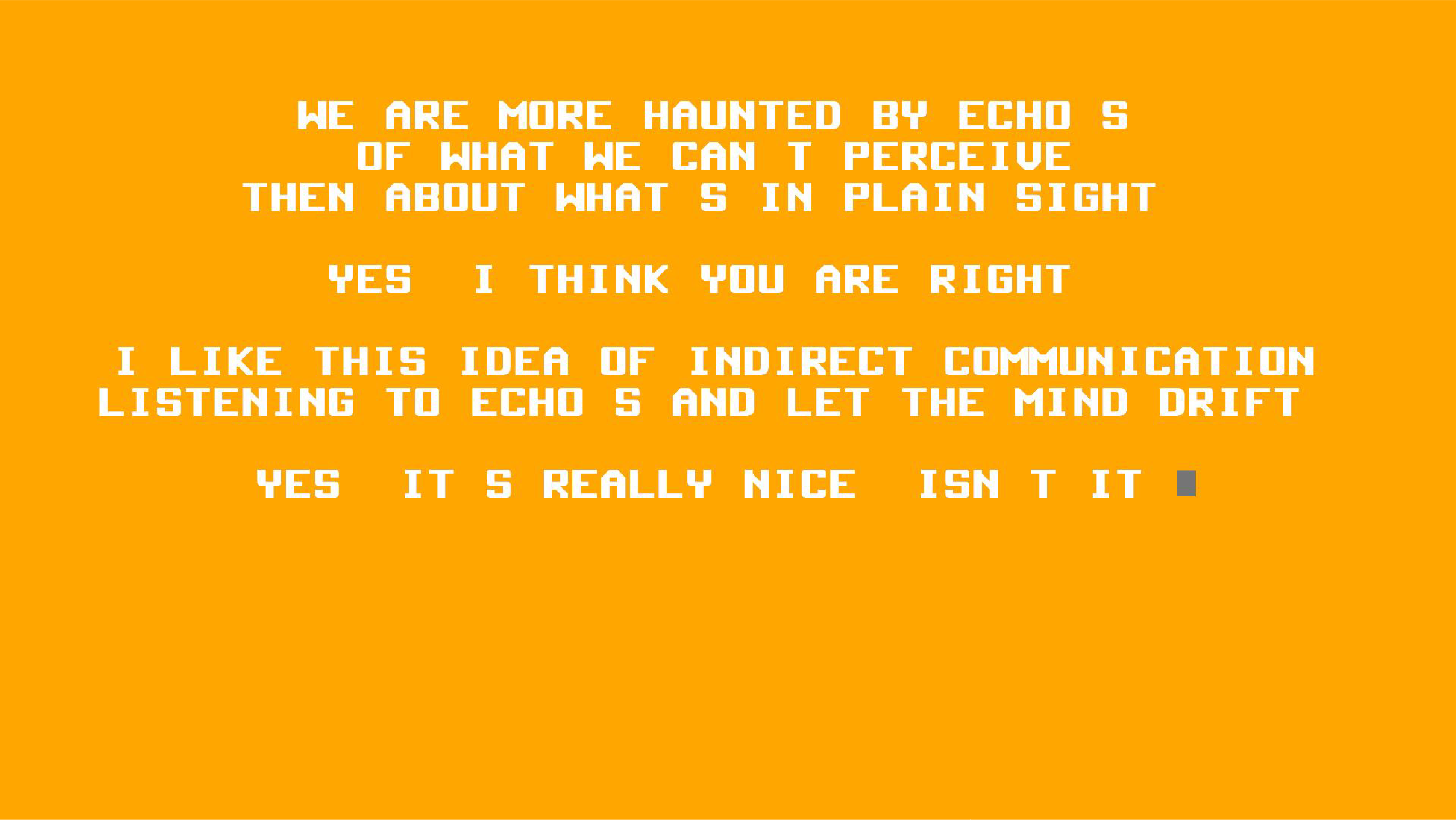Game Development in the context of artist residency Futurelab at Ars Electronica, Linz
THE FUTURE IS CODED 2024
----------------------------------
Excerpt Story Chapter 1
I am in acoustic space. Gently pulsating bells are dotting the surface as far as I can see. The idea of color is entirely lacking, but I know it's there because of the elaborate geometry. In the back of my head lives a memory of something, something from here. I'm trapped in this universe. One in which there are no stars, no nights, and no tides. Yet, there are just the miniature bells, glowing in a sea of grey darkness. Light rains down on me, low and vibrant in the interior. Once I pass through the border, I will see it. For the first time in years, I know that there is something else out there. The sky is hazy and dark, with grey clouds and dark water. I know what they are: they are memories. Over the course of the next five years, they’ll fade until they are indistinguishable from the surrounding sky. A sea of orange color, generated by billions of microscopic creatures, rises up from the depth. It's an intense color, like nothing I've ever seen before. Life is scattered almost everywhere like a fine dust. I blank my mind and relax my body. The tunnel will take me to the next spot. The creatures inside me show the gooey orange gunk that comes out of my body. I like this. 'I will return here'.
----------------------------------Interview
Ars Electronica: What made you apply for the artist residency at the Ars Electronica Futurelab and move your workplace from Antwerp to Linz – the corona situation permitting?
Fanny Zaman: In Flanders, hardly any institutions are working with an interdisciplinary approach between Art, Technology and Science. This is mainly because our education system doesn’t have an interdisciplinary focus. The system consists of discrete institutions that work separately from each other. In addition to, or maybe because of this, there is also a growing gender gap: STEM for the boys and Art for the girls. This is what has happened in the last twenty years. Within that divided and separating educational system, it is not possible to include hardcore art studies with hardcore technology studies and hardcore theoretical studies. Also, following graduation, these worlds tend to remain separated. Art, where the girls are, is currently short of funding whilst STEM, where the boys are, is the target of all investments. Everything in between is a vast desert at the moment. Add to this cuts in the humanities are not only a Flemish trend, but an international one, too. If you want to work interdisciplinarily, then you must go to very different schools. I spent four years at Art School, where I did my master’s degree, which is on a practical level. After that, I had one year in Media Studies and one year in Information Science – both at universities, and at a theoretical level. Then, I did a two-year teacher training to become eligible to teach my subject, plus one more year in Game Development at a technical school. That’s nine years of study to only get to the basics. I still suffer from impostor syndrome, especially due to the lack of peers and role models. The Flemish Ministry of Arts and Culture has started to develop an interdisciplinary Digital Culture residency program abroad to meet the demand. It is a start.
The project I proposed to the Ars Electronica Futurelab is titled “The Future Is Coded”, which I thought would be a good fit for a laboratory of the future. I’m fascinated by the phenomenon – perhaps the human obsession –, of forecasting; going from ancient, analogue and widespread divination techniques in folklore to contemporary digital technologies in finance, industry and politics to predict futures. In my research, I discovered certain correlations between them. Analogue as well as digital techniques both use media or mediators to fixate or handle change events. To interpret the fixed medium – tea leaves in a cup, or the outcome of throwing the dices– we use indexes (to set guidelines) and apophenia (to create coherence). Apophenia is our brain’s natural ability to project and tell stories from unrelated bits of reality. “The Future Is Coded” draws attention to the fact we use our capacity for apophenia to speculate about the future. To not do so would leave this future space locked, and to unlock it means cracking a code. Through our senses, streams of data from the world around us gather in the pool of our non-conscious mind. The key to crack the code must be there, hidden in the non-conscious storage room of our brain.
Ars Electronica: How is apophenia interesting at the interface of technology and science?
Fanny Zaman: In The Age of Surveillance Capitalism, Shoshana Zuboff explores how Big Data companies forecast our future behavior. A lot of these companies´value depends on what Zuboff calls the “rest data.” The “rest data” we produce through our online behavior has much greater predictive value then a selfie we consciously post online. The algorithm looks for correlations in the “rest data” of our online behavior: how long or how fast we click, what click patterns emerge from successive sessions, and more. Algorithmic profiling leads to the “algorithm knowing us better then we know ourselves” (see on that matter also Yuval Noah Harari ‘s Homo Deus). Algorithms are now used to survey our “rest data,” but they don’t map it out for us to use. These maps are sold to third parties without our knowledge or consent.
Ars Electronica: Will these maps be at the centre of your research at the Ars Electronica Futurelab?
Fanny Zaman: How these maps are generated by the Big Five (Google, Amazon, Facebook, Apple, Microsoft) is not publicly known. In the Ars Electronica Futurelab, we will research data analytics and algorithmic profiling in small test settings. We will correlate data and compare it to our human capacity for apophenia. We will reflect on this with a small team of participants from the Ars Electronica Futurelab. Could you share with us a few ideas about the direction your work could be heading towards in this context? Fanny Zaman: My intention is to create a three-dimensional VR environment that uses the element of profiling. The player will be confronted with its emerging profile, which progresses as he*her travels and spends time inside the virtual world. The player will be confronted with the resulting map and invited to reflect on it, together with a virtual guide or narrator. I look forward to discussing my plans with the Ars Electronica Futurelab team. Since I must now work alone at home in Belgium, we haven’t met yet, but I miss them already.
.gif)




